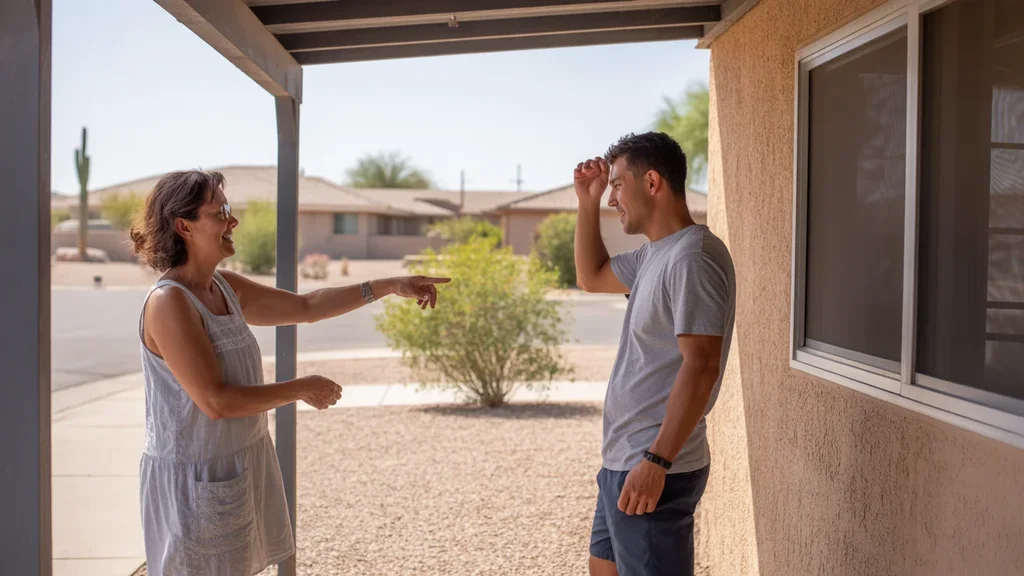What Summer Power Costs Look Like in Buckeye
Residents of Buckeye, Arizona can expect their summer energy bills to soar as temperatures climb into the triple digits from June through August. The average monthly electric bill during these hot summer months is around $220, with many households seeing even higher costs. The average July electric bill in Buckeye is about $280, making it one of the most expensive months of the year.
These high summer energy bills in Buckeye are largely driven by the intense cooling demands required to keep homes comfortable in the scorching desert heat. Air conditioning units and heat pumps work overtime, consuming significant amounts of electricity to maintain livable indoor temperatures. Older homes with less efficient insulation and longer daylight hours also contribute to increased energy usage and costs during the summer months.
Why Are Energy Bills So High in Buckeye During the Summer?

Several factors contribute to the sky-high energy bills Buckeye residents face each summer. The primary culprit is the extreme cooling demand placed on air conditioning systems and heat pumps. With daytime temperatures routinely exceeding 100°F, cooling equipment must run continuously to keep homes at a comfortable temperature, consuming large amounts of electricity in the process.
Older homes with less efficient insulation and air sealing also play a role in driving up summer energy costs. Poorly insulated attics, walls, and windows allow more heat to enter the home, forcing cooling systems to work harder and longer to maintain the desired temperature. The extended daylight hours during summer months also mean that homes are exposed to more direct sunlight, further increasing the cooling load.
In addition to cooling demands, other energy-intensive appliances and systems can contribute to high summer bills in Buckeye. Pool pumps, irrigation systems, and electric vehicle charging all consume additional electricity during the hot months. These factors, combined with the primary cooling load, result in significantly higher energy expenses for Buckeye residents during the summer season.
Sample Monthly Bill Breakdown
To better understand where energy costs are allocated during the summer, consider the following breakdown of a typical monthly electric bill in Buckeye:
| Component | Percentage of Total Bill |
|---|---|
| Cooling | 55% |
| Water Heating | 15% |
| Appliances | 12% |
| Lighting | 8% |
| Other | 10% |
Based on a 1,800 sq ft home with average A/C use.
Expect cooling to account for 50–60% of your July energy bill in Buckeye. This significant portion of the total cost highlights the importance of efficient cooling practices and equipment in managing summer energy expenses.
Ways to Lower Summer Energy Bills
While summer energy bills in Buckeye can be daunting, there are several strategies residents can employ to reduce their costs:
- Take advantage of off-peak billing hours by running major appliances and charging electric vehicles during lower-cost periods.
- Install a smart thermostat to automatically adjust temperatures based on occupancy and optimize cooling efficiency.
- Seal air ducts and improve insulation to minimize heat gain and reduce the load on your cooling system.
- Use shade features like trees, awnings, or window films to block direct sunlight and keep your home cooler.
🏆 Energy Tip: Set your thermostat to 78°F during the day and use ceiling fans to improve comfort without overworking your A/C.
Time-of-Use Pricing in Buckeye
Some utility providers, such as SRP and APS, offer time-of-use (TOU) pricing plans for Buckeye residents. These plans incentivize energy use during off-peak hours by offering lower rates during less demanding times of the day. Peak hours, typically in the late afternoon and early evening, have higher rates to discourage excessive consumption during periods of high demand.
By shifting energy-intensive activities like running the dishwasher, doing laundry, or charging an electric vehicle to off-peak hours or weekends, Buckeye residents can take advantage of lower rates and reduce their overall summer energy costs. It’s important to review your utility provider’s specific TOU plan to understand the exact peak and off-peak hours and rates.
Summer Cooling FAQs
Q: How much more are summer bills compared to spring?
A: In Buckeye, summer electric bills can be 50-100% higher than spring bills due to the increased cooling demand.
Q: Does solar reduce summer energy costs?
A: Yes, installing solar panels can significantly reduce summer energy costs by generating electricity during peak sunlight hours, offsetting the need for grid power.
Q: What temperature should I keep my house at to save energy?
A: Setting your thermostat to 78°F or higher during the summer can help reduce cooling costs while maintaining comfort. Every degree above 78°F can save 3-5% on your cooling expenses.
Smart Cooling Prep for Buckeye Summers
To prepare for the high summer energy bills in Buckeye, it’s essential to understand the average cost range, which typically falls between $220 and $350 per month from June through August. By implementing energy-saving tips like using a smart thermostat, sealing air leaks, and taking advantage of off-peak billing, residents can minimize their cooling costs and maintain a comfortable home.
For a more detailed understanding of how utilities impact your household expenses, read our comprehensive guide on Buckeye Utility Costs Explained. By staying informed and proactive, you can effectively manage your summer energy bills and keep your cool in the hot Arizona sun.
